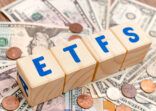Capital is clearly flowing into passive products, data shows.
At the end of July, ETFs and ETPs listed globally hit a record high of $3.34trn, according to research and consultancy ETFGI. Worldwide ETF assets are expected to grow to $7trn by 2020, according to a study by PwC.
Asia, with $249bn in ETF assets, is well behind the US and Europe in adoption. But the region is growing fast. The PwC report said ETF assets in Asia are expected to reach $560bn by 2021, corresponding to an 18% compound annual growth over the next five years.
In Hong Kong, more ETFs are coming to market and the recent Hong Kong-Shenzhen Stock Connect will allow the sale of the products. This year, Amundi, BMO and Samsung Asset Management are among the fund houses that have launched ETFs in Hong Kong.
Smart beta, which are products that passively follow indices but are weighted to take into account certain factors such as yield, momentum and minimum volatility, also hit a record $429bn at the end of June, ETFGI data shows.
With all the apparent enthusiasm around ETFs, Fund Selector Asia takes a look at the strategies of the iShares CSI 300 A-share index ETF and CSOP China CSI 300 Smart ETF.
Luke Ng, senior vice president of research at FE Advisory Asia, provides a comparative analysis.
Under the hood

Both ETFs are listed for secondary market trading on the Hong Kong Stock Exchange. The iShares product was launched in 2009, and aims to track the CSI 300 index via a synthetic representative strategy. The base currency is denominated in Hong Kong dollars.
The CSOP product launched in October 2015 and is designed to track the CSI 300 Smart index using a representative sampling strategy. The ETF is able to trade via Hong Kong dollars and RMB.
IShares – a synthetic strategy
To replicate the performance of CSI 300, iShares gains the underlying exposure by entering into derivative instruments, called China A-share access products, Ng explained. They are linked to a representative sample of the underlying index, and/or are invested into a series of iShares CSI Sector index funds.
“These CSI Sector index funds are also set up with synthetic strategies. The manager allocates them with roughly the same proportion as that represented in the CSI 300.
“In other words, investors of this ETF would not hold the underlying A-share constituents listed in either Shanghai or Shenzhen stock exchanges. Exposure is indirectly via derivatives issue by investment banks or through a series of iShares sector fund products that replicate the underlying sector performance using derivatives as well.”
A synthetic strategy normally provides minimal tracking error with lower cost, he added.
“However, it may not be the case for this ETF. First, the underlying derivatives are linked via a representative sample of the index and so are the underlying sector index funds.
“Second, there could be deviation between the allocations of the underlying sector index funds and the underlying sector composition of CSI 300.”
On the other hand, investors could also be exposed to counterparty risks by the derivative exposures, even though they are minimised due to full collateralisation, he said.
CSOP – a play on A and H shares
With the CSOP China CSI 300 Smart ETF, the manager aims to replicate the underlying index performance by directly investing into a basket of a representative sample of companies on the index, which are highly correlated to the underlying index, Ng said.
“These representative samples always represent over 80% of the full constituents. Usually, the manager will fully replicate the larger constituents with sufficient liquidity and take representative samples of the smaller ones with less liquidity.”
The underlying index of the CSOP ETF, unlike the CSI 300 of iShares, attempts to take advantage of pricing differences of the dual listing CSI 300 index constituents — between A- and H-shares.
For those constituents only available in A-shares, the index would include them, Ng said. For the dual- listied shares, the index would select the A-shares provided the price does not exceed 110% of the respective H-share price after exchange rate conversion, and vice versa.
“This switching feature is on a monthly basis. Therefore, investors of this ETF are able to track the CSI 300 performance, and at the same time play with the price differences on those dual listing shares, assuming prices are going to converge in the long term.”
On the other hand, investors may bear higher trading costs as the manager switches between A and H shares in accordance with the CSI 300 Smart Index, Ng said.
The ETF invests into A-shares via an RQFII quota and the Shanghai Hong Kong Stock Connect. There could be potential liquidity concerns when trading via the Shanghai-Hong Kong Stock Connect if the daily investment quota has been used up on the day when trades are required, he added.
















